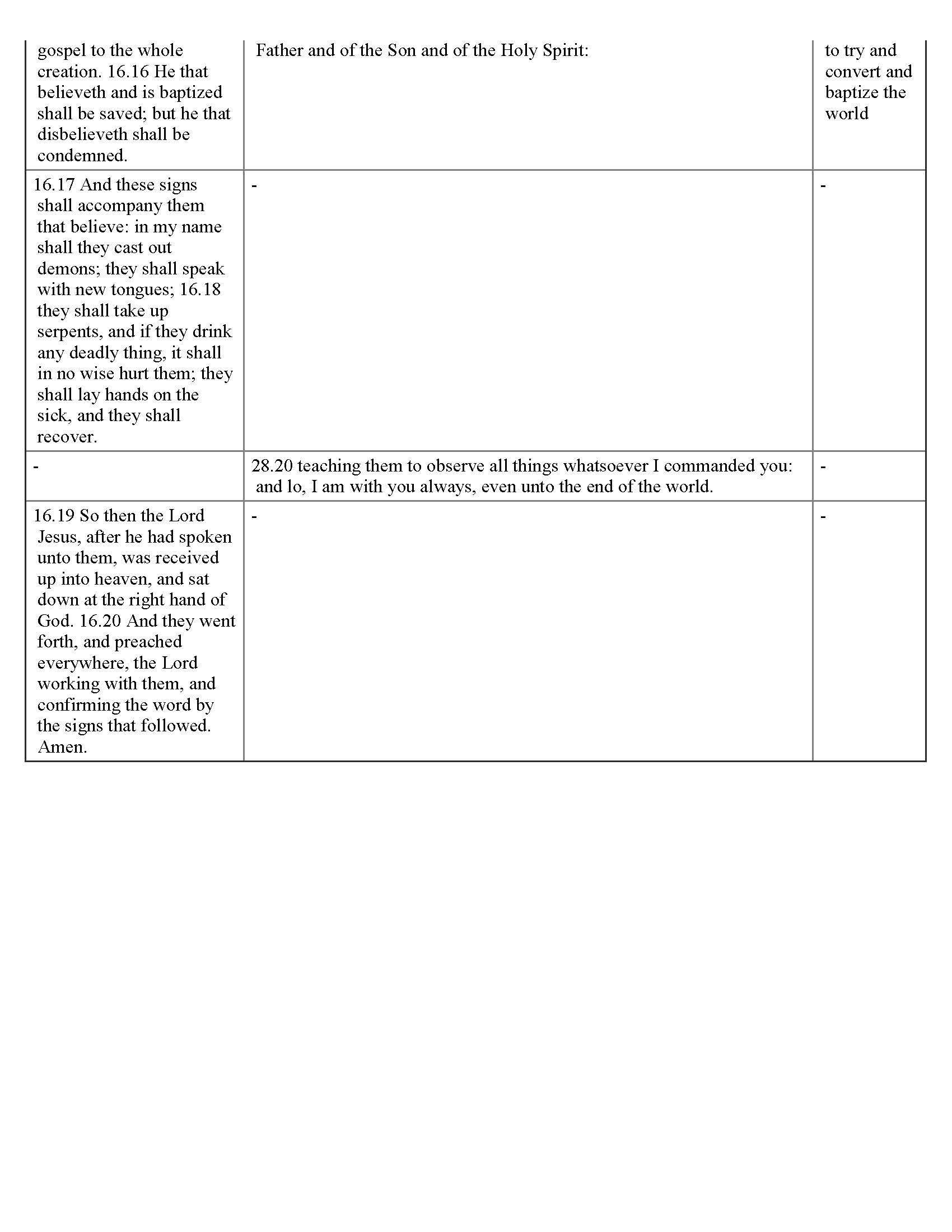1. Introduction of the Issue
 |
| The Parallels of Pauline |
The argument for LE is generally based on quantity and supposed 2nd century Patristic evidence. I assume, as does authority, that GMark was written first and that GMatthew used GMark as a primary source. GMatthew often follows GMark closely. Metzger does not mention GMatthew as evidence against LE as he generally avoids arguments from silence. Modern arguments against LE generally do. The potential strength of GMatthew as evidence here is the quality of age (GMatthew is commonly thought to have been written late first century). This would not only be the earliest known Patristic evidence but the earliest External evidence. This is especially applicable to arguments for LE as their primary claimed evidential quality is age, specifically, early Patristic references.
The only known significant Christian author before GMark was Paul. In one disputed passage, mostly thought to be likely original, Paul says that a resurrected Jesus appeared to disciples apparently in the same way he appeared to Paul. But Paul does not provide any other description such as the setting. GMark goes beyond Paul to provide a narrative of Jesus' supposed resurrection. An ending of 16:8 does not show any resurrection appearance. The LE does but does not agree with Paul/Fake Paul regarding the order and the witnesses.
2. Discussion
If you want the women to sing out, sing out
- Generally follows GMark closely.
- Specifically follows what comes before LE (16:1-8) closely.
- Does not follow 16:9-20.
This is evidence that GMatthew did not follow the LE because it was not there at the time GMatthew copied from GMark. And now a look at GMark 16:1-8 compared to GMatthew 28:1-8 verse by verse:
GMark to 16:8 sure looks like GMatthew's source to 28:8. Most of the content and nouns are the same or at least similar and both have the strong emotion of fear/amazement for flavor. The only significant difference is the last line of each where GMatthew's women run to tell as opposed to GMark's woman who run not to tell.We have the following reasons to think that GMatthew, did not have the LE in his copy of GMark:
- GMark in general is GMatthew's source. There is little of the LE in GMatthew.
- GMatthew closely follows GMark to 16:8 (see 1).
- GMatthew flips the key assertion of 16:8, "ran and told no one", to "ran and told everyone", to change the expectation of what follows.
3. Conclusion

Who's been messing with the ending of GMark?

Note that for 16:9-20, there is only one good parallel in GMatthew. Also note that GMatthew's ending is consistent with 16:1-8 (after editing the women telling rather than not telling) but not 16:9-20:
- 1) The biggest individual story in 28:9-20 concerns The Empty Tomb. This is the dominant story of GMark 16:1-8.
2) GMatthew has the disciples meet Jesus in Galilee. Just as "Mark's" angel of 16:7 instructed.
Conclusion = The LE was not a source for GMatthew and the ending GMatthew had to work with from GMark was dominated by The Empty Tomb. GMatthew is a witness (the earliest) against LE.



3 comments:
From James Snapp @
http://www.thetextofthegospels.com/2015/11/nick-lunns-book-about-mark-169-20.html
"
JoeWallack,
I addressed such a view in the course of the summarized presentation that begins at www.curtisvillechristianchurch.org/MarkOne.htm . See, especially, the paragraph above the "Concluding Thoughts" at http://www.curtisvillechristianchurch.org/MarkThree.htm . Basically, (a) it puts vv. 9-20 in a heads-I-win (because close parallels would show that the author of verses 9-20 used Matthew and Luke) and tails-you-lose (because a lack of close parallels shows that Matthew and Luke didn't use vv. 9-20) scenario. And (b) Luke doesn't use Mark 6:45-8:26 but nobody (or almost nobody -- there are probably still a few folks who like Streeter's theory about this) is saying that this means that Luke used a copy of Mark that lacked those verses."
November 21, 2015 at 5:16 PM
The point that James Snapp is trying to defend against is that:
GMatthew follows GMark very closely to 16:8 and than abruptly does not follow the LE at all. GLuke also follows GMark closely (not as closely) to 16:8 and than abruptly stops following closely but does have some good parallels and general following. The point in favor of 16:8 as the ending is the relative change in the level of copying/following to and after 16:8.
Snapp's first attempted defense is that if parallels are shown between the LE and the post resurrection stories in GMatthew/GLuke, one can argue that this is evidence that the LE had a source of the subsequent Gospels and to the extent there are not parallels between the LE and the subsequent Gospels, one can argue that the LE is not original. The point above though is based on the RELATIVE change in copying/following to 16:8 and than after. Snapp's atempted defense does not address this and thus is just a side comment which does not provide any defense.
Snapp's second attempted defense is that GLuke does not use an entire section of GMark. The defensive logic is that since GLuke does not use an entire section in GMark which we would all agree was in GLuke's source of GMark, GMatthew's and GLuke's lack of using most/some of the LE is unremarkable by comparison. The difference is that GLuke exorcised ENTIRE stories from GMark. On the other hand, the LE and the likewise exiting the empty tomb narratives in GMatthew/GLuke are all part of the SAME story. What a defense would need is an example of a subsequent author significantly changing the level of copying/following at a specific point within the same story. Even if you could find one such example, it would still be the exception.
Post a Comment